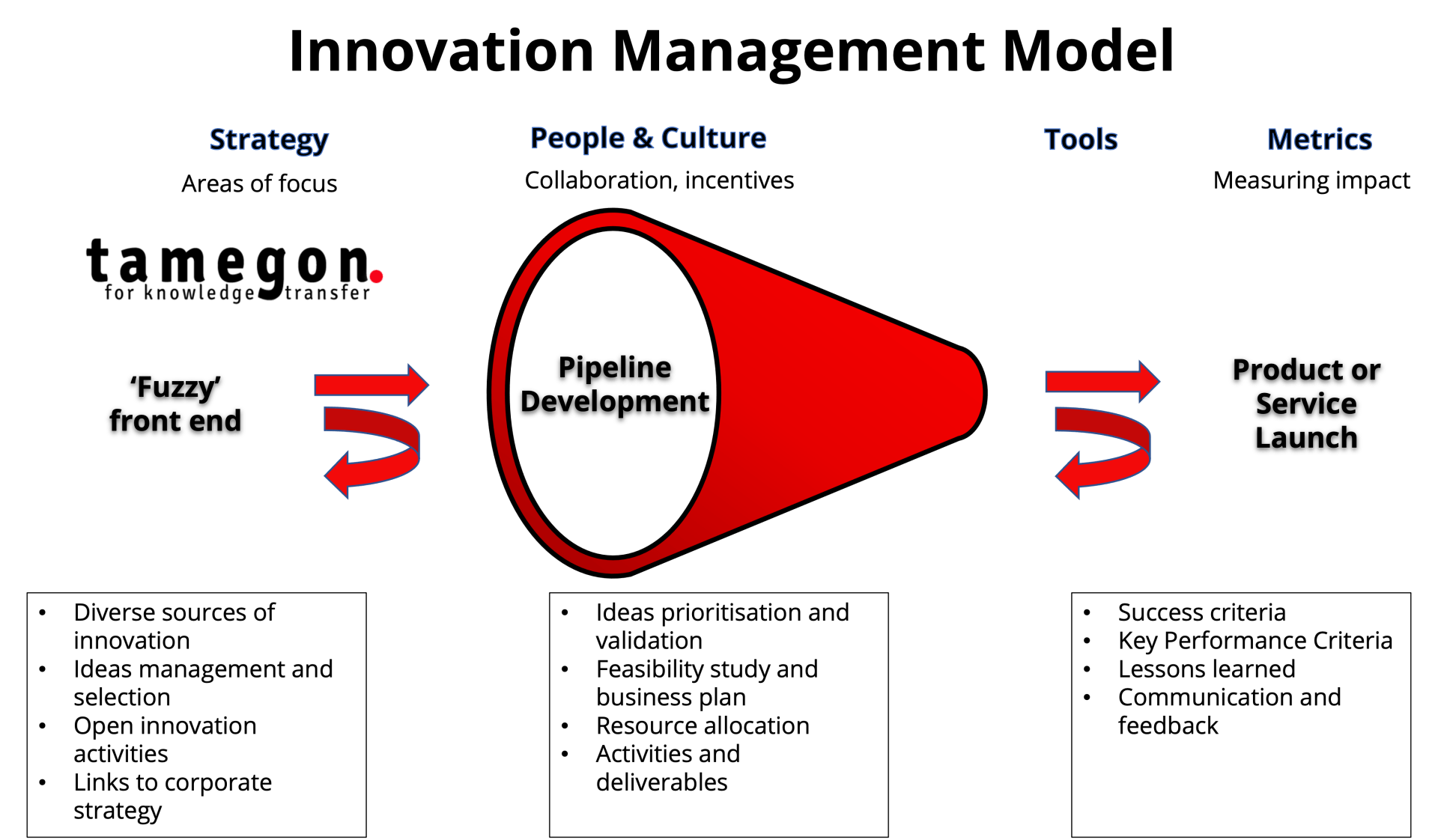Why a lightbulb is not the most appropriate image to depict innovation?
Dr Costas Chryssou
August 24, 2022
tamegon Innovation and Growth Advisory Firm
I was recently reflecting on the limited number of images used to depict innovation and the innovation management process. It seems that most articles, presentations and websites represent innovation using lightbulb images putting the focus and emphasis of the whole innovation process, it seems, entirely on the eureka moment - the lightbulb moment.
However,
- Is this the most significant step of the innovation process?
- Is in reality the idea the most important part of bringing a new or improved product or service to market?
- What are the implications for our innovation pursuits if we only focus our efforts on the ideation part of the innovation process?
- How the adoption of an innovation model can support any organisation to being successful in their innovation-related projects and aims?
There are many limitations to putting the entire emphasis of our innovation process on the idea creation part:
- We are making creativity synonymous to innovation, and therefore, we may assign less importance to the subsequent steps and processes that we need to follow in order to prioritise, select, fund, develop, and launch an idea into a successful product or service.
- Such an approach does not reflect reality on the ground since experience suggests that innovation projects are inherently risky and the innovation management process is anything but linear, comprising many feedback loops, dead ends, and re-starts, all contributing to organisational lessons learned.
- This approach may further make us believe that brilliant ideas will result in successful products or services while experience shows that the "right" team, experimentation on a concept, execution, and committing investment are critical to the success of any new products and services.
- Importantly, an approach that puts such emphasis on the idea part, may not allow us to consider from the outset the benefits we are trying to achieve through the organisation's innovation pursuits. We may not consider for example what success will look like - are we measuring success through financial performance, technical progress, commercial gain, or through the resulting societal impact?
- Furthermore, such an approach may prevent us from allocating the organisation's scarce resources across different types of innovation (continuous improvement, breakthrough, disruptive and transformational) and thus stop us from creating a balanced portfolio of innovation projects managing their associated risks and benefits.
- Another maybe unintended consequence of taking such an approach to innovation could be that putting idea generation as the most important part of the journey, we may trap ourselves within the closed innovation model and not consider the benefits and considerable advantages of the open innovation model and the development of networks and alliances.
The above points relate to a common challenge that many organisations I speak to seem to experience - where to start their efforts to support their innovation initiatives. Should they start with developing an innovation strategy and align it with the overall business strategy or should they start by developing a culture of innovation within the organisation? Experience shows that organisations that are successful make innovation a priority, they commit investment and talent to it, and they have the skills to execute innovation projects translating them into commercial success.
However, recent Accenture's survey has found that 82% of organisations run innovation projects in exactly the same way as the "business as usual", regular operations. This seems to lead to different challenges - 72% of senior executives admit to missing crucial growth opportunities and 60% of them struggle to learn from past mistakes. Adoption of an innovation management model formalising the process and considering the organisational context is a good way to shape and support the application of innovation within an organisation.
The context part will include activities such as
- creating an innovation strategy identifying the innovation focus for the organisation - how the different types of innovation fit in the business strategy and which innovation activities should we prioritise;
- developing skills and embedding a culture of innovation - allowing freedom at work to explore, providing clear strategic goals, forming multi-disciplinary teams, and introducing incentives;
- reaching out and forming networks and alliances developing open innovation initiatives to support and enhance the delivery of innovation projects; and
- using appropriate metrics to assess the success of innovation pursuits.
The process part will comprise steps and safeguards for dealing with the "fuzzy" front-end ideation part, the selection and prioritisation of the "right" ideas, their funding and development based on risk and scarce resources available, their launch and commercial success while capturing lessons learned to make the whole process sustainable.
By adopting an innovation management model, organisations can embed a sustainable and systematic way of approaching innovation enabling creativity and supporting systems to coexist without stifling innovation pursuits leading to the anticipated overall benefits for the organisation.

Costas Chryssou
MBA, PhD
Founder and Managing Director
Sign up for our
articles
Sign up to our newsletter












